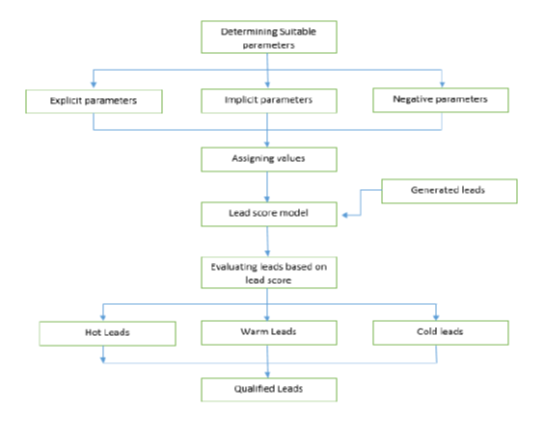


Indian Journal of Science and Technology
Year: 2021, Volume: 14, Issue: 16, Pages: 1302-1309
Original Article
G Naveen Kumar1, K Hariharanath2*
1Student, SSN School of Management, Chennai
2Professor, SSN School of Management, Chennai, Tel.: +91 94442 10305
*Corresponding Author
Tel: +91 94442 10305
Email: [email protected]
Received Date:02 March 2021, Accepted Date:17 April 2021, Published Date:10 May 2021
Background: Indian higher education sector is characterized by severe competition. The market size is 91.7 USD and its contribution to GDP is 3.8%. The admissions market is an evolving one with digital players’ significant role. Students depend on these portals for making decisions pertaining to a selection of an institution. These companies make revenue by providing various digital marketing services to the educational institutions. Selling leads is one of the critical activities as part of their package offer to various educational institutions. Objectives: The major problem faced by these companies is the low conversion rate of the leads at the client end. The main objective of this study is designing and developing a lead score model for these companies to qualify the leads. Methods: The research focuses on developing a lead score model for these companies to qualify the leads based on three parameters — explicit parameters, implicit parameters, and negative parameters. These parameters are chosen because they represent the lead behaviour and engagement level. The overall lead score is calculated by assigning scores for each parameter. The value for each parameter is determined based on their importance and also in consultation with the sales team. Then the leads are classified into hot, warm, and cold leads based on the lead score and a lead score matrix is created based on explicit and implicit scores. Findings: The major finding of the study shows that out of a sample of 1900 leads, 21% are hot leads which are sales qualified, 35% are warm leads also called as marketing qualified and 44% are cold leads. The lead score matrix is used to qualify the leads. The result of the matrix shows that 60% of the leads are qualified. Thus, it helps the digital companies to filter out unqualified leads and manage the leads in a better way which improves the quality of the leads delivered to the clients. This will raise the conversion rate at customer level. Such improved conversion rates reinforce the business model of digital marketing companies. Novelty: The lead score model is designed with customization and applied for digital marketing firms in education vertical in India.
Keywords: Lead scoring; Marketing Qualified Leads; sales qualified leads; implicit parameters; explicit parameters
© 2021 Naveen Kumar & Hariharanath.This is an open-access article distributed under the terms of the Creative Commons Attribution License, which permits unrestricted use, distribution, and reproduction in any medium, provided the original author and source are credited. Published By Indian Society for Education and Environment (iSee)
Subscribe now for latest articles and news.